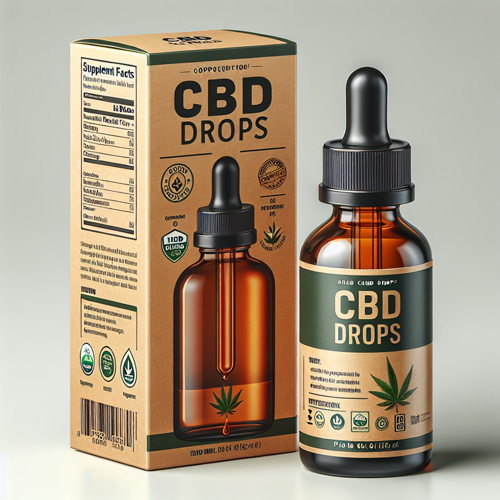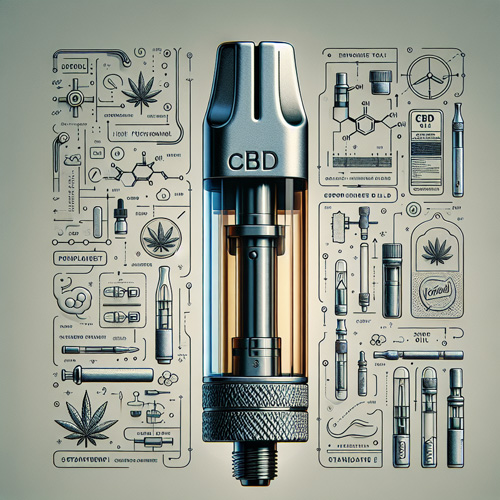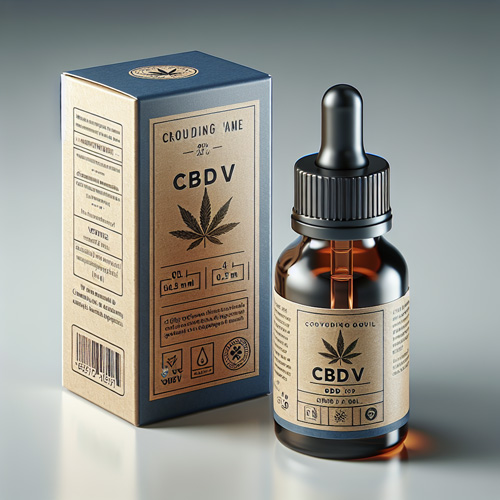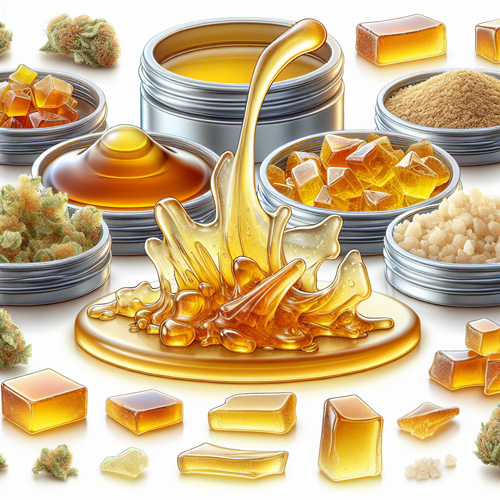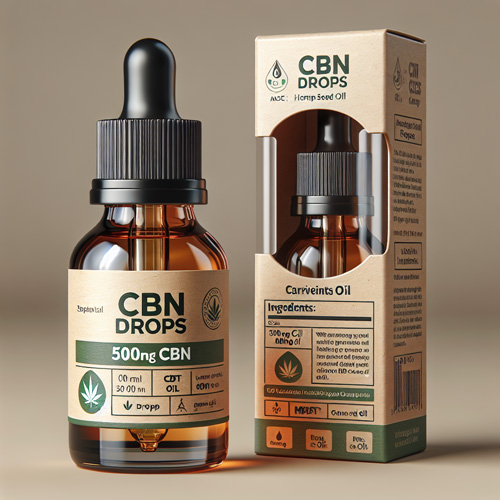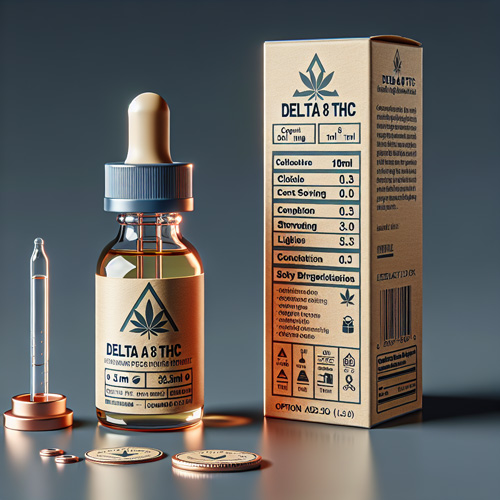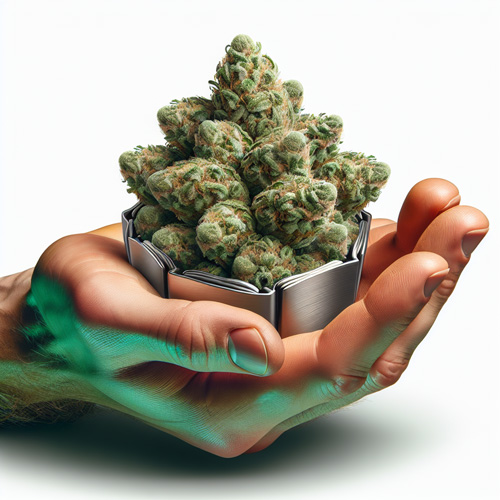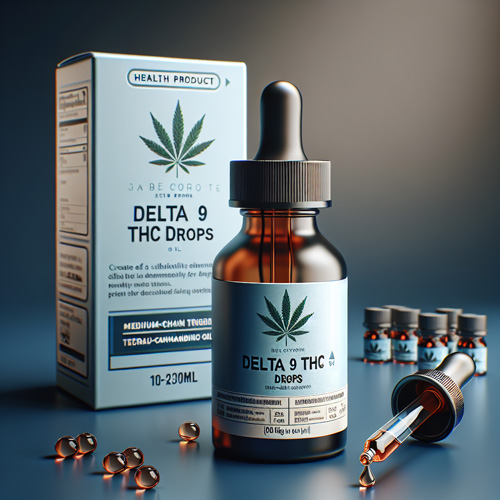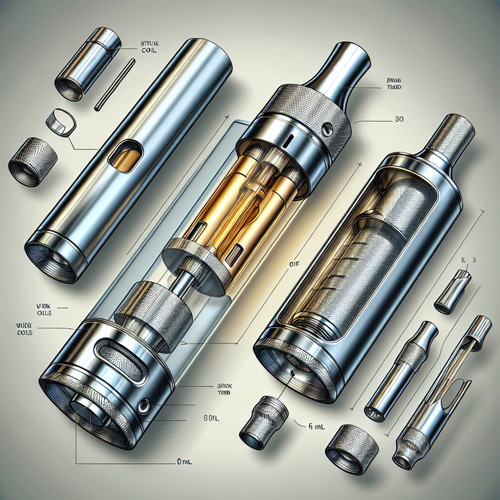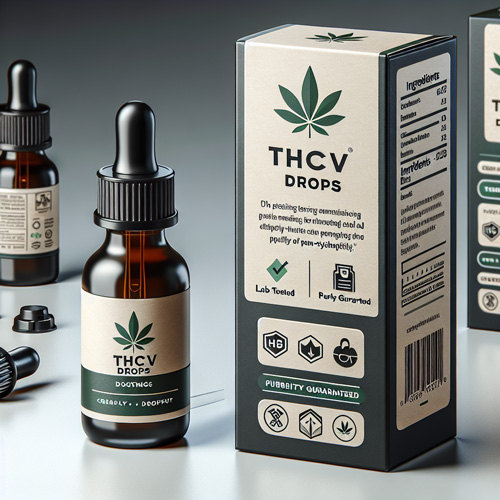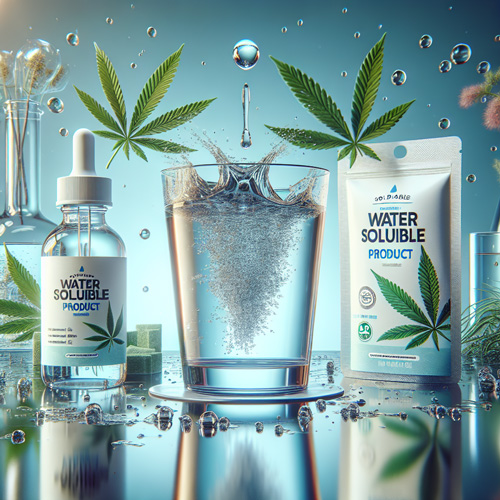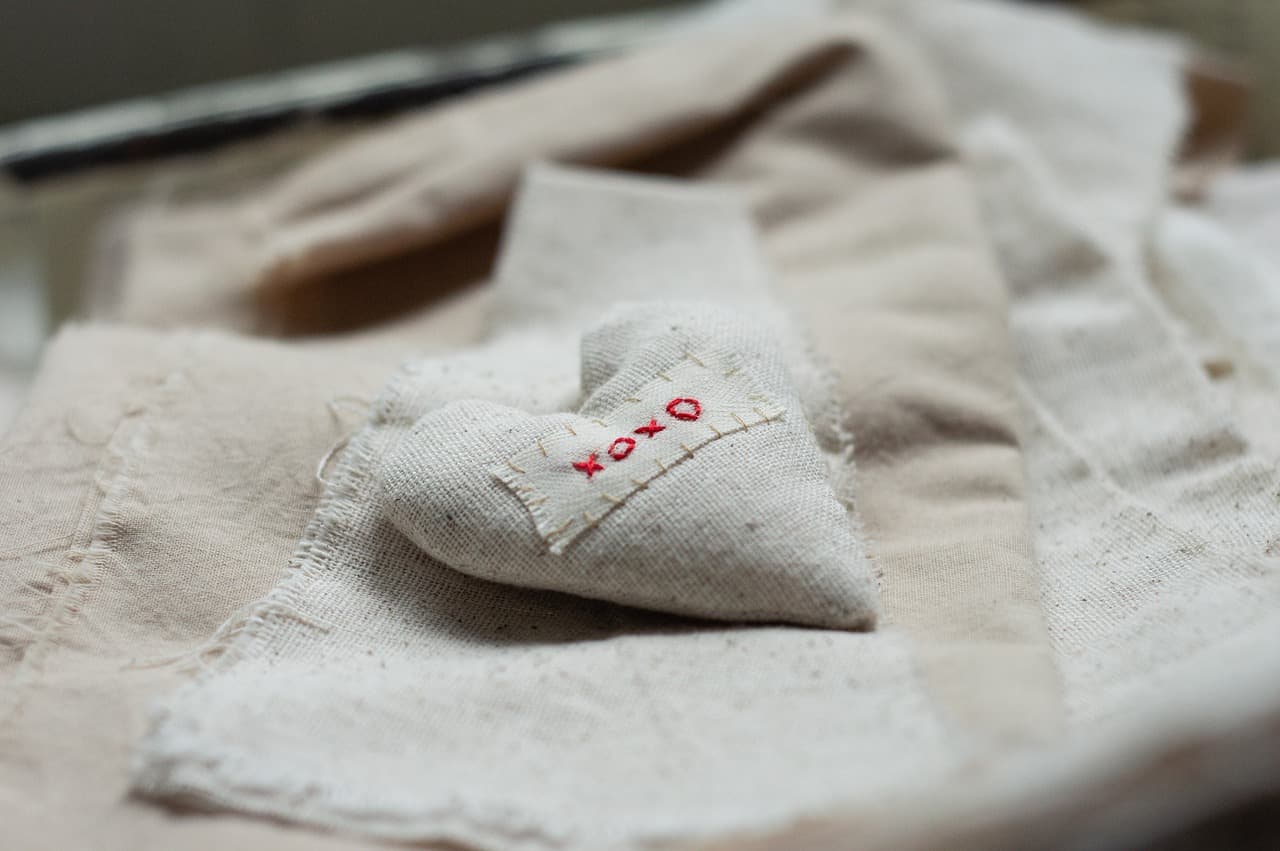
Sustainable Benefits of Hemp Textiles
What is Hemp?
Hemp is a versatile and sustainable plant that has been used for centuries to produce a variety of products.
It is a type of cannabis plant that is specifically grown for its industrial uses, such as textiles, building materials, and biofuels. Unlike its cousin marijuana, hemp contains very low levels of THC, the psychoactive compound, making it non-intoxicating.
Hemp has a fast growth rate and can reach maturity in just a few months, making it an ideal crop for sustainable agriculture. The plant is known for its strong and durable fibers, which can be used to create textiles that are not only eco-friendly but also highly versatile. Hemp textiles are becoming increasingly popular in the fashion industry due to their natural and breathable qualities.
Furthermore, hemp cultivation requires minimal pesticides and water, making it a more sustainable alternative to other natural fibers like organic cotton. Overall, hemp is a valuable and environmentally-friendly resource that offers numerous benefits in various industries.
History of Hemp Textiles
Hemp textiles have a rich history that dates back thousands of years. Originating in Central Asia, the cultivation of hemp fiber began in China around 2800 BCE. Hemp quickly spread to Europe, where it became an essential part of various cultures.
Throughout history, hemp has been utilized for a wide range of purposes. In ancient China, it was used for building materials, clothing, rope, and even medicine. Its versatility made it highly valued in many societies. In Europe, hemp was widely cultivated for textiles and paper production.
However, the growth of hemp faced a setback during the early 20th century when it was temporarily prohibited in the United States due to its association with marijuana. This prohibition limited the production and use of hemp textiles for several decades.
Today, as the sustainable fashion movement gains momentum, hemp is experiencing a resurgence. The eco-friendly nature of hemp fibers and its potential as a replacement for synthetic materials has captured the attention of fashion industry leaders. Hemp textiles offer a more sustainable alternative to traditional fabrics, with the added benefit of being biodegradable and requiring fewer chemical treatments during production.
The history of hemp textiles shows its long-standing significance in different cultures, and its recent revival highlights its potential in building a more sustainable fashion industry.
Benefits of Hemp Textiles
Hemp textiles offer a plethora of benefits that make them a sustainable choice for the fashion industry. One key advantage of hemp fibers is their incredible strength and durability. Hemp textiles have a high tensile strength, which means they can withstand heavy use and are resistant to tearing. This makes them ideal for creating long-lasting clothing items and reducing the need for frequent replacements.
Another noteworthy benefit of hemp textiles is their low environmental impact. Hemp plants grow faster and require less water compared to other natural fibers like cotton. Furthermore, hemp cultivation improves soil health by removing toxins and replenishing nutrients. This makes hemp textiles a more sustainable alternative to conventional fabrics, which often involve the use of harmful chemicals and contribute to soil degradation.
Additionally, hemp fibers can be easily blended with other materials to create hybrid fabrics. By combining hemp with materials like organic cotton or recycled polyester, a hybrid fabric is created that retains the strength and durability of hemp while adding comfort and flexibility. This allows designers to create versatile and comfortable clothing items without compromising on sustainability.
The benefits of hemp textiles are evident. They offer exceptional strength and durability, have a lower environmental impact, and can be blended with other materials to create hybrid fabrics. As the fashion industry strives towards more sustainable practices, hemp textiles are emerging as a popular choice for conscious consumers and brands alike.
Environmental Impacts
The use of hemp textiles has several sustainable benefits that are advantageous for the environment. Hemp plants have a lower ecological footprint compared to other natural fibers, such as cotton, as they require less water and grow at a much faster rate.
This makes hemp cultivation a more efficient use of natural resources. Additionally, the process of growing hemp aids in improving soil health, as it helps remove toxins and replenish nutrients in the soil. Unlike conventional fabrics, which often rely on the use of harmful chemicals and contribute to soil degradation, hemp textiles offer a more eco-friendly alternative.
By choosing hemp fabrics, we can reduce our carbon emissions and reduce the need for chemical treatments, thus contributing to a healthier planet and more sustainable fashion industry.
Sustainable Fabrics
Sustainable fabrics have gained significant attention in recent years as the fashion industry seeks more environmentally friendly alternatives. These fabrics not only contribute to a lower carbon footprint but also help conserve natural resources.
One prominent example of a sustainable fabric is hemp. Hemp is derived from the hemp plant and has minimal environmental impacts. It requires less water, land, and pesticides compared to other crops, making it a viable option for eco-conscious fashion. Additionally, hemp fibers have a high tensile strength, ensuring durability and longevity in clothing items.
Organic cotton is another sustainable fabric that is grown without the use of harmful chemicals and pesticides. It helps preserve soil health, reduces water pollution, and minimizes carbon emissions during its cultivation. By choosing organic cotton, the fashion industry can significantly decrease its ecological footprint.
Recycled fibers also play a crucial role in sustainable textiles. These fibers are made from pre-consumer or post-consumer waste materials, reducing the need for raw materials and curbing waste accumulation. Recycling old garments into new fabrics not only saves natural resources but also helps divert textile waste from landfills.
Opting for sustainable fabrics like hemp, organic cotton, and recycled fibers has several environmental benefits. These fabrics reduce deforestation, limit the use of harmful chemicals, and protect animal habitats. Moreover, they improve the overall health and well-being of workers in the textile industry.
Sustainable fabrics are essential in the quest for a more eco-friendly fashion industry. By choosing fabrics like hemp, organic cotton, and recycled fibers, we can significantly lower our carbon footprint and conserve precious natural resources.
Natural Fiber
Natural fibers are plant-based materials that are widely used in the production of textiles. They are highly relevant in the context of hemp textiles due to their sustainable and eco-friendly properties. Hemp fiber, which is derived from the stems of the Cannabis Sativa plant, is considered one of the strongest natural fibers available.
Hemp fiber’s strength makes it suitable for various applications, including the production of durable and long-lasting clothing items. Additionally, hemp fiber is biodegradable, meaning that it can naturally decompose without causing harm to the environment. This makes hemp textiles a great choice for those seeking eco-friendly options.
Another advantage of hemp fiber is its breathability. The porous nature of the fiber allows air to pass through, allowing the body to regulate heat and moisture. This makes hemp fabrics ideal for warm weather, as they can help keep the wearer cool and comfortable.
Furthermore, hemp fiber is known for its softness, making it a comfortable choice for clothing and other textile products. Its natural softness eliminates the need for chemical treatments that can be harmful to both the environment and human health.
Natural fiber, particularly hemp fiber, provides numerous benefits in the production of sustainable textiles. Its strength, biodegradability, breathability, and softness make hemp textiles an excellent choice for those looking for environmentally friendly and comfortable options.
Organic Cotton vs. Hemp Clothing
When comparing organic cotton and hemp clothing, it is important to consider their respective environmental impacts and advantages.
One key difference lies in the water consumption and land usage. Organic cotton requires a significant amount of water to grow, often contributing to water scarcity in many regions. On the other hand, hemp requires much less water to thrive, making it a more sustainable choice. Additionally, hemp cultivation requires less land compared to organic cotton, allowing for more efficient use of resources.
Another advantage of hemp clothing is its higher fiber yield. Hemp plants produce more fiber per acre than organic cotton, resulting in a higher yield with less land use. This makes hemp a more resource-efficient option for textile production.
Furthermore, hemp cultivation can replenish soil quality. The deep roots of the hemp plant help prevent soil erosion and improve soil structure. Additionally, hemp has the ability to capture carbon emissions from the atmosphere, further contributing to its positive environmental impact.
Overall, when considering the environmental impacts of organic cotton and hemp clothing, it is clear that hemp surpasses organic cotton in terms of water consumption, land usage, fiber yield, soil replenishment, and carbon capture. Embracing hemp clothing can be a significant step towards a more sustainable and eco-friendly fashion industry.
Hemp Cultivation and Production
Hemp cultivation and production have a long history, with evidence of its cultivation dating back thousands of years. Historically, hemp was widely cultivated for its strong fibers, which were used to make various products, including textiles, rope, and paper. Cultivation practices varied across different regions, with China being one of the earliest cultivators of hemp.
In recent years, hemp cultivation has seen a resurgence, driven by the increasing demand for sustainable fibers and products. Europe has emerged as a significant player in the hemp industry, with countries like France and the Netherlands leading in hemp cultivation and production. China remains a key player as well, with a long history of hemp cultivation and processing.
The legalization of hemp production in the United States has had a significant impact on the global hemp market. With the passing of the 2018 Farm Bill, hemp cultivation became legal on a federal level, opening up opportunities for farmers and businesses in the United States. This has led to a rapid expansion of hemp cultivation and production in the country, making the United States a major player in the global hemp market.
The legalization of hemp production in the US has also contributed to increasing awareness and acceptance of hemp as a sustainable and versatile crop. It has paved the way for research and innovation, leading to the development of new hemp-based products and technologies.
The cultivation and production of hemp have experienced a resurgence, driven by increasing demand for sustainable materials. With a rich historical background and current trends in different regions, hemp continues to gain momentum as a valuable and environmentally friendly crop.
Toxic Chemicals in Traditional Textiles
Traditional textiles often undergo extensive chemical treatments throughout their manufacturing process. These toxic chemicals not only have detrimental effects on the environment but also pose risks to human health.
Synthetic dyes, commonly used in textile production, contain hazardous substances such as heavy metals, formaldehyde, and benzene. These chemicals can cause allergic reactions, skin irritations, and respiratory issues in individuals who come into contact with the dyed textiles. Moreover, synthetic dyes are non-biodegradable and can contaminate water sources during the dyeing process, leading to pollution of rivers and aquatic ecosystems.
Formaldehyde, frequently used in fabric finishes and as a preservative, can cause skin irritations, respiratory problems, and even cancer with prolonged exposure. Flame retardants, commonly found in upholstery fabrics, mattresses, and children’s sleepwear, are known to contain toxic compounds like polybrominated diphenyl ethers (PBDEs), which can disrupt hormone function and persist in the environment, accumulating in wildlife and humans.
The environmental impacts of these toxic chemicals are far-reaching. Hazardous substances leach into the soil through landfills, contaminating groundwater and affecting soil health. Additionally, when textiles are washed, these chemicals can be released into waterways, polluting aquatic ecosystems and threatening aquatic life.
To mitigate the negative effects of toxic chemicals in traditional textiles, there is a growing movement towards sustainable alternatives such as hemp textiles. Hemp fibers do not require extensive chemical treatments, as they have natural antimicrobial and anti-fungal properties.
By choosing to use hemp textiles, consumers can reduce their ecological footprint and protect both the environment and human health from the harmful impacts of toxic chemicals used in traditional textile production.
Advantages of Using Hemp Textiles
Hemp textiles offer numerous advantages over traditional textiles made from synthetic materials. Not only are they free from toxic chemicals and pollutants, but they also provide a sustainable and eco-friendly alternative for the fashion industry.
From their natural fibers to their cultivation process, hemp textiles have a significantly lower environmental impact compared to conventional fabrics. With their strong tensile strength, hemp fibers create durable and long-lasting fabrics that can withstand wear and tear.
Additionally, hemp cultivation has the potential to improve soil health and reduce the carbon footprint of the fashion industry. Overall, the use of hemp textiles promotes a more sustainable and responsible approach to textile production.
1. Sustainable and eco-friendly: Hemp textiles are derived from the hemp plant, which is known for its sustainability and minimal ecological footprint. Hemp cultivation requires fewer pesticides and herbicides compared to other fiber crops, such as cotton.
It also requires less water, making it a more water-efficient choice. The plant grows quickly and densely, allowing for a higher yield per acre compared to other natural fibers. Hemp cultivation also helps improve soil health, as its deep root system prevents erosion and helps retain moisture in the soil.
2. Durable and long-lasting: Hemp fibers are known for their exceptional strength and durability, making them ideal for producing long-lasting textiles. The tensile strength of hemp fibers is even stronger than that of cotton, ensuring that hemp fabrics can withstand regular wear and tear.
This durability ensures that hemp textiles have a longer lifespan and do not need to be replaced as frequently, reducing waste and promoting a more sustainable fashion industry.
3. Reduced environmental impact: The production of hemp textiles has a significantly lower environmental impact compared to synthetic textiles. Hemp fibers are naturally biodegradable, meaning that they break down more easily in the environment without contributing to pollution.
Furthermore, the cultivation of hemp requires fewer chemical inputs compared to traditional textiles, reducing the release of harmful pollutants into the environment. Overall, hemp textiles help reduce water and air pollution, as well as the accumulation of non-biodegradable waste in landfills.
4. Versatility: Hemp textiles can be used in a wide range of applications, including clothing, accessories, and even building materials. The strong and durable nature of hemp fibers makes them suitable for various clothing items, from simple t-shirts and jeans to more intricate designs.
Additionally, hemp fabrics can be blended with other fibers, such as organic cotton, to create unique and sustainable textile blends. In the construction industry, hemp fibers can be used to produce building materials, such as insulation, which are not only environmentally friendly but also offer excellent thermal and acoustic properties.
5. Health benefits: Hemp textiles are naturally hypoallergenic and gentle on the skin, making them suitable for individuals with sensitive skin or allergies. Unlike synthetic textiles, which often contain harmful chemicals and irritants, hemp fabrics are free from toxins and irritants that can cause skin irritations and allergic reactions. Additionally, hemp textiles have excellent breathability and moisture-wicking properties, keeping the wearer cool and comfortable in warm weather.
Hemp textiles offer numerous advantages in terms of sustainability, durability, reduced environmental impact, versatility, and health benefits. By choosing hemp textiles over conventional textiles, we can contribute to a more sustainable and responsible fashion industry while enjoying high-quality and long-lasting products.
Tensile Strength and Durability
Hemp textiles stand out for their remarkable tensile strength and exceptional durability, surpassing many other fabrics in terms of longevity. The natural fibers derived from the hemp plant are among the strongest in the world, making hemp products highly resistant to tear and wear.
Hemp’s tensile strength from its natural cellulose fibers refers to its ability to withstand tension or pulling forces without breaking or deforming. Compared to fabrics like cotton, hemp fibers possess a significantly higher tensile strength, ensuring that hemp textiles maintain their structural integrity and shape over a longer period of time. This mechanical strength also means that hemp clothing is less likely to tear or pill, making it a durable choice for everyday wear.
The durability of hemp textiles offers numerous benefits both for the consumer and the environment. For consumers, the long-lasting nature of hemp clothing means that garments can withstand frequent use and washing without losing their quality. This reduces the need for frequent replacements, saving individuals money and reducing their overall environmental impact.
This is particularly significant in the fashion industry, where the constant turnover of trends and fast fashion contribute to high levels of textile waste. By choosing hemp clothing, individuals can help reduce waste and promote a more sustainable approach to fashion clothes.
Hemp textiles boast impressive tensile strength and durability, making them highly resistant to tearing and wear while maintaining its ability to remain a breathable fabric. This durability benefits both consumers, with longer-lasting garments, and the environment, through reduced waste generation. By opting for hemp clothing, individuals can embrace a more sustainable fashion choice without compromising on style or quality.
Woody Core for Added Strength and Support
The woody core, also known as the hurd, plays a crucial role in enhancing the strength and support of hemp textiles. This inner part of the hemp plant’s stem is a fibrous material that is rich in cellulose and lignin. By incorporating the woody core into the production of hemp fabrics, manufacturers can create textiles that are more durable and long-lasting.
To utilize the woody core, it undergoes a process called decortication, which separates it from the outer fibers of the hemp plant. Once separated, the hurd can be processed into a variety of forms, including fibers, chips, or particles. These processed forms can then be incorporated into the weaving or knitting process of hemp textiles.
The inclusion of the woody core in hemp fabrics adds strength and support to the final product. The cellulose and lignin present in the hurd provide inherent structural integrity, ensuring that the fabric maintains its shape and resists wear and tear over time. This added strength contributes to the overall durability and longevity of hemp textiles, allowing them to withstand repeated use and washing without compromising their quality.
By harnessing the benefits of the woody core, hemp textiles offer a sustainable alternative to other fabrics. Their inherent strength and support reduce the need for frequent replacements, ultimately reducing waste and promoting a more environmentally friendly approach to fashion.
In addition to their durability, hemp textiles also provide other sustainable benefits, such as their low water and chemical requirements during cultivation.
Soil Health Benefits from Growing Hemp
Growing hemp has numerous soil health benefits that make it an ideal crop for sustainable agriculture. One of the most prominent benefits is its ability to replenish nutrients in the soil. Hemp plants have deep root systems that reach down into the soil, pulling up nutrients and minerals that may have been depleted by previous crops.
As a result, hemp helps restore the nutrient balance in the soil nutrition, improving its fertility and promoting the growth of other crops.
In addition to nutrient replenishment, hemp also increases microbial activity in the soil. The plants release certain compounds through their roots, which act as food for beneficial microorganisms. These microorganisms then break down organic matter and turn it into nutrients that can be readily absorbed by plants. This symbiotic relationship between hemp and soil microorganisms enhances soil health and supports a thriving ecosystem within the soil, all while improving moisture content in the soil.
Furthermore, the deep root system of hemp plays a crucial role in improving soil structure. The roots penetrate deep into the soil, breaking up compacted layers and improving drainage. This process, known as soil aeration, allows water and air to circulate more easily, promoting healthier soil conditions. It also helps prevent soil erosion by anchoring the soil with its extensive root network.
Industrial hemp cultivation contributes to soil health by replenishing nutrients, increasing microbial activity, and improving soil structure. Its deep root system helps break up compacted soil layers and aeration, ensuring a fertile environment for the growth of various crops. As a result, hemp cultivation supports sustainable agriculture practices and promotes a healthier ecosystem on our planet.
Disadvantages of Using Hemp Textiles
While hemp textiles have numerous sustainable benefits, it is essential to acknowledge some disadvantages as well. One disadvantage of using hemp textiles is that the natural fibers have a tendency to wrinkle and crease easily. This can lead to weak points and potential holes in the clothing over time. However, with proper care and maintenance, these issues can be minimized.
Another drawback of hemp textiles is their relatively higher cost compared to other options. The production and processing of hemp fibers require specialized equipment and additional manual labor, which contributes to the higher price. However, it is important to note that despite the initial investment, hemp clothing proves to be a worthwhile long-term investment due to its exceptional durability.
Despite these disadvantages, hemp textiles provide significant environmental advantages over other materials. Hemp is a rapidly renewable resource and requires less water and land compared to conventional cotton. It also has a lower carbon footprint, as it absorbs more carbon dioxide during its growth cycle. Additionally, hemp cultivation does not require the use of harmful chemicals, making it a safer option for both farmers and the environment.
While hemp textiles may have drawbacks such as wrinkles, creases, and a higher initial cost, their durability and low environmental impact make them a worthwhile investment. By choosing hemp clothing, consumers can support sustainable fashion and contribute to reducing their ecological footprint.
Common Misconceptions about Hemp Clothing
Hemp clothing has long been plagued by several misconceptions. Many people believe that hemp textiles are rough and scratchy, making them uncomfortable to wear. However, advancements in processing techniques have resulted in softer and more refined hemp fabrics that are comparable to other natural fibers in terms of comfort.
Another common misconception is that hemp clothing is limited in terms of style options and color choices. In reality, hemp textiles can be blended with other fibers, such as organic cotton or silk, to create a wide range of fabric blends with different textures and finishes. Additionally, hemp can be dyed using natural, plant-based dyes, offering a spectrum of vibrant and eco-friendly color options.
Some individuals still associate hemp clothing with marijuana and mistakenly believe that wearing hemp garments is illegal. However, hemp textiles are made from industrial hemp, a variety of the cannabis plant that contains only trace amounts of THC, the psychoactive compound found in marijuana. Industrial hemp is legal and widely cultivated for various purposes, including textile production.
Furthermore, there is a misconception that hemp clothing is less durable and more difficult to care for compared to other fabrics. On the contrary, hemp fibers have exceptional tensile strength, making them highly durable and long-lasting. Hemp fabrics are naturally resistant to mold, UV rays, and abrasion, ensuring that garments retain their shape and quality over time. These fabrics are also machine washable and require minimal care.
By debunking these misconceptions, it becomes clear that hemp clothing offers both style and sustainability, making it a viable choice for those seeking eco-friendly fashion options.


